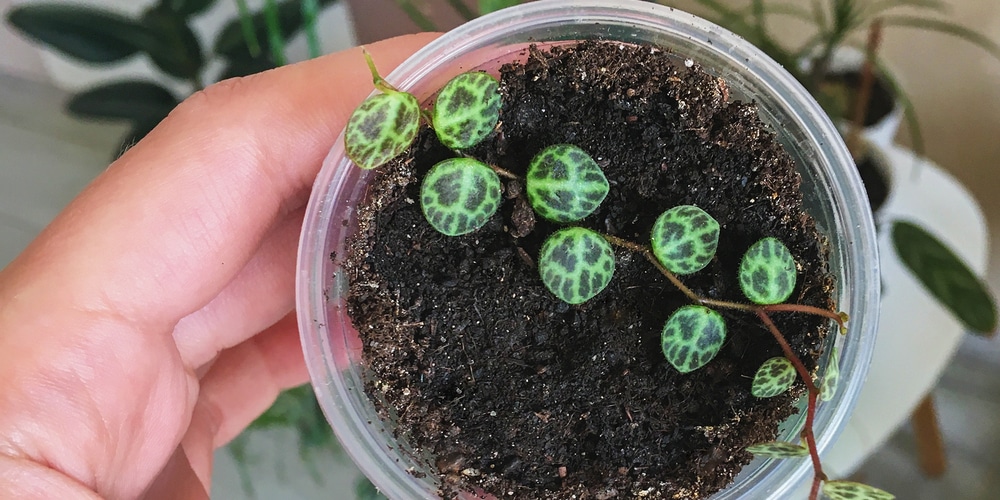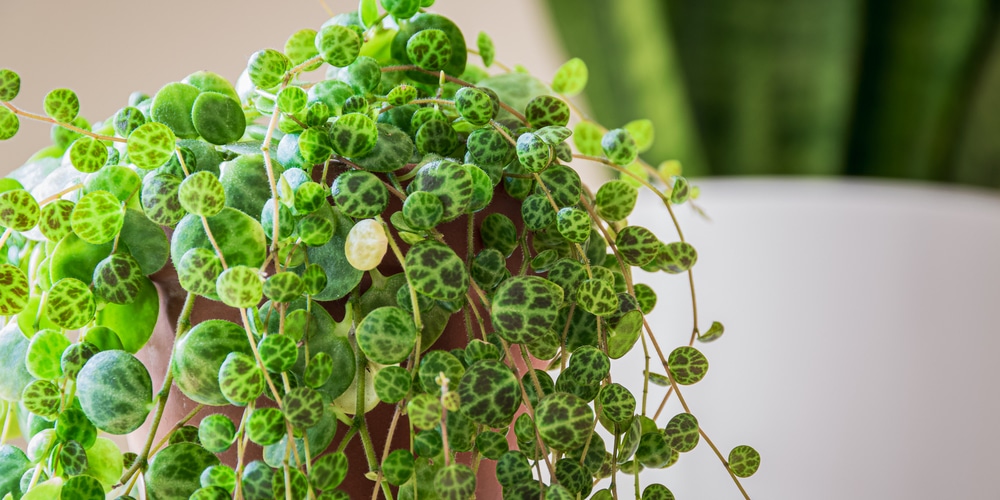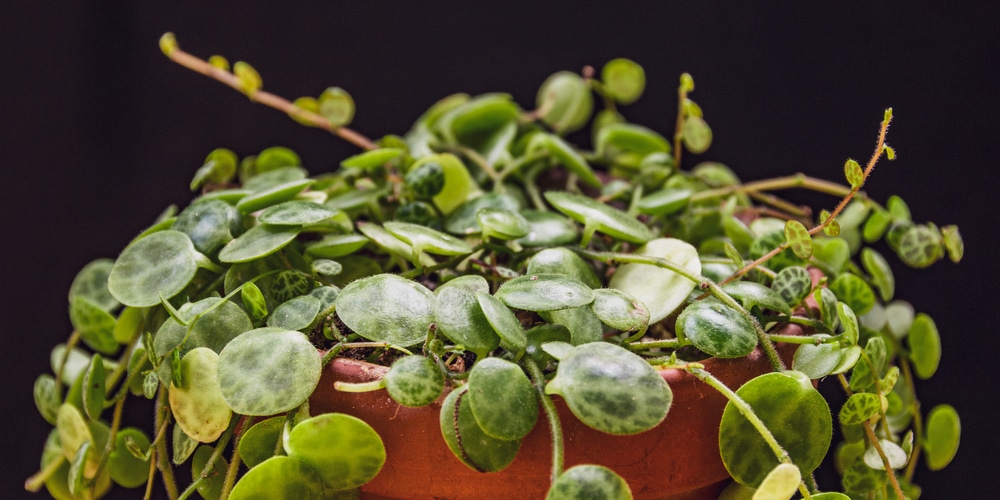The Peperomia Prostrata, a.k.a String of Turtles, is not for the faint of heart, or those who pay too much attention to their houseplants. Let this be both a warning and an encouragement to those who want to care for a String of Turtles- it’s actually a tough one, as long as you give it the right kind of soil and watering frequency.
Here’s what you must know about what soil for string of turtles to use and how should you water your semi-succulent so it lives a long time.
What Soil is Best for String of Turtles?

In order to understand what kind of soil your string of turtles needs you will have to know its native environment.
Peperomia prostrata are typically found in rainforests and tropical regions where the air is very humid and the soil is constantly moist. However, most of the ground is made up of decayed organic matter such as leaves, moss, and rocks.
That said, a string of turtles will want to sit in a soilless medium that drains very well. As far as soil pH is concerned you can aim for a neutral to an acidic medium that’s anywhere between 5.0 to 7.0. However, the more important thing is to make the soil free-draining, which means water should pass through fairly quickly.
Alongside the free-draining characteristic is that the medium should be able to hold a bit of moisture. The string of turtles plant likes damp soil, but keep in mind that there’s a big difference between slightly moist and sopping wet.
Some of the best soil material you can use to pot a string of turtles include fine bark, peat moss, perlite, sand, and pumice. You can mix up your own or just buy premade succulent medium to eliminate the guesswork. Alternatively, you can use a regular potting mix but make sure to amend it with a generous amount of perlite and sand (should make up half of the pot material).
String of Turtles have fine, shallow roots that lie just below the soil surface. These roots are sensitive to moisture and will quickly rot when they’re constantly wet. It’s important that you take the time and provide a good soil medium for your string of turtles because this can save you a lot of problems down the line.
How Should I Water My String of Turtles?
Before taking home a peperomia prostrata you should be aware that you’ll be taking care of a semi-succulent plant.
Yes, the foliage is too cute for words as they look like tiny turtles moving about, but they’re not as delicate as you’d like to believe. These leaves hold a fair amount of moisture and will slowly feed the plant when it experiences drought.
Treat your string of turtles as a succulent and you’ll have the care down pat. If grown as a houseplant, you shouldn’t water it more than once a week unless you see the leaves curling or when the weather is really warm. The truth is that the plant can survive a bit of neglect and when you forget to water it now and then.
Peperomia prostrata doesn’t need too much water in the pot, either, since the roots are quite shallow. You can actually water ‘safely’ by spraying the top layer of the soil with water. However, you should hold off until you see and feel that the top inch of the medium is dry.
The best time to water your string of hearts is when the top two inches of the soil are completely dry. You can use a wooden chopstick or a moisture meter to see if your plant needs a drink. If it feels a bit moist, hold off on the watering and wait a few more days.
Keep Humidity Levels in Check
Humidity is just as important for a string of turtles as watering. The plant thrives in a highly humid and warm environment, with temperatures ranging from 65 to 75 degrees F.
Fortunately, there are several ways you can increase room humidity. You can use a spray and mist your string of turtles every day, or get a humidifier so you won’t have to make adjustments manually. Alternatively, you can fill a small saucer with water and place it in close proximity to the plant.
Related Article: String of Bananas Care

